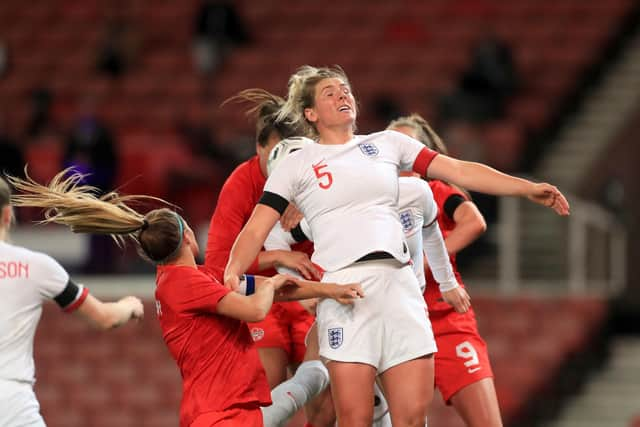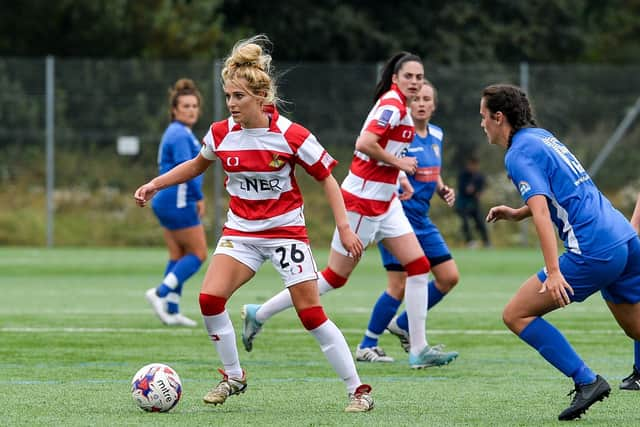Growth of women’s football refreshing, just make sure everyone is along for the ride - Nick Westby
The positive storylines are certainly eye-catching:
New lucrative TV contracts for the Super League.
Big, established clubs like Manchester City and Chelsea pumping money in to rapidly progress their women’s teams.


Sellout crowds to watch the Lionesses.
Bramall Lane and the New York Stadium playing their part in England’s staging of next year’s European Championships.
Advertisement
Hide AdAdvertisement
Hide AdAll of which is great for the growth of the women’s game, and long overdue, seemingly driven by an unspoken guilt among administrators at national and club level, and we here in the media, that women’s football was ignored, the butt of the joke for far too long.
But in the haste to bury that guilt, we must be careful not to move too quickly for fear of leaving holes that could eventually bring about collapse.


Two instances spring to mind in recent weeks.
Firstly the Lionesses’ march to the next World Cup.
A 4-0 win over Northern Ireland at Wembley, headlined by a hat-trick from Whitby’s Beth Mead, pictured, was swiftly followed by a 10-0 romp in Latvia in which Mead again found the net, as did her fellow Yorkshire Lionesses, Millie Bright and Rachel Daly.
Proud moments for all of them and each of those three in particular are great ambassadors for the women’s movement. But the stat that came with those victories was worrying.


Advertisement
Hide AdAdvertisement
Hide AdIn the four games in which Sarina Wiegman has taken charge of England, the winning margins have been 10-0, 8-0, 4-0 and 10-0.
Latvia provide England’s opposition at the Keepmoat Stadium on November 30 when hopefully the sports-loving people of Yorkshire will turn out in force.
I would come expecting goals. If England can hit 10 in Riga, how many will they score in Doncaster?
What is apparent from those results is that the remorseless march towards professionalism in England is not being matched in other parts of the world.
Advertisement
Hide AdAdvertisement
Hide AdFor all the United States and Norways of the women’s footballing world, there are too many Latvias for whom the women’s football team is a convenient add-on to the men’s operation.
It is not just confined to qualifying stages either. USA beat Thailand 13-0 at the last World Cup.
Such lop-sided results, while rewarding for personal stats sheets, do not do the bigger picture any good.
England’s aggressive attempt to level the playing field between men and women is all well and good but if it is not matched in other parts of the world it makes for an unsustainable product.
Advertisement
Hide AdAdvertisement
Hide AdSupporters want rivalries, great matches. How long will they keep paying for 10-0s?
Solutions? How about equal or capped funding from FIFA? Domestically, a greater spread of TV money through the leagues? Both are idealistic. When has men’s football shared the wealth? Capitalism reins.
The second instance to raise concern about certain elements of the women’s game being left behind is the case of Sophie Scargill.
Last month, The Yorkshire Post reported how Scargill, the captain of Doncaster Rovers Belles of the fourth tier of women’s football, had damaged her knee in training and required surgery.
Advertisement
Hide AdAdvertisement
Hide AdThe twist was that as an amateur player, Doncaster Rovers were not obliged under the terms of her contract to pay the £5,000 surgery bill.
Scargill was faced with going through the NHS, which with the greatest of respect to that fine institution, estimated she would have to wait two years for the surgery. At 26, that was patently not a solution. Career-threatening if anything.
So Scargill took to Twitter to advertise a GoFund me page that within days, and with a little help from Gary Lineker, had raised the required funds.
Around the same time, Rovers were paying for the full treatment of one of their male players, Joe Wright, who had suffered the injury in April but was out of contract by the summer.
Advertisement
Hide AdAdvertisement
Hide AdDoncaster Rovers stressed they offered to loan Scargill the money, but that came too late, the PR own goal had already been volleyed into the roof of the net.
The issue Scargill’s case exposed was the lack of protection female players have further down the pyramid.
Admittedly, in this case Scargill was an amateur, but there needs to be better insurance protocols put in place to protect players further down the leagues. Rovers Belles play in the fourth tier, most teams in the third tier only pay their players expenses.
Solutions? Again, equal funding from the FA and a wider distribution of TV money.
Again idealistic, but the issue needs talking about.
Advertisement
Hide AdAdvertisement
Hide AdMoney is suddenly sweeping into the top of the women’s game like never before.
Sponsors and broadcasters see a growth industry, faces and brands to get behind.
But there is so much more beyond that which needs nurturing if the true potential of the women’s game is to be realised.
The women’s game needs to learn from the men’s and avoid falling into some of the traps that let it down by making the gap between the haves and the have-nots too wide.
The evolution of the women’s game is refreshing, but there remains issues to address before it runs away with itself.
Comment Guidelines
National World encourages reader discussion on our stories. User feedback, insights and back-and-forth exchanges add a rich layer of context to reporting. Please review our Community Guidelines before commenting.